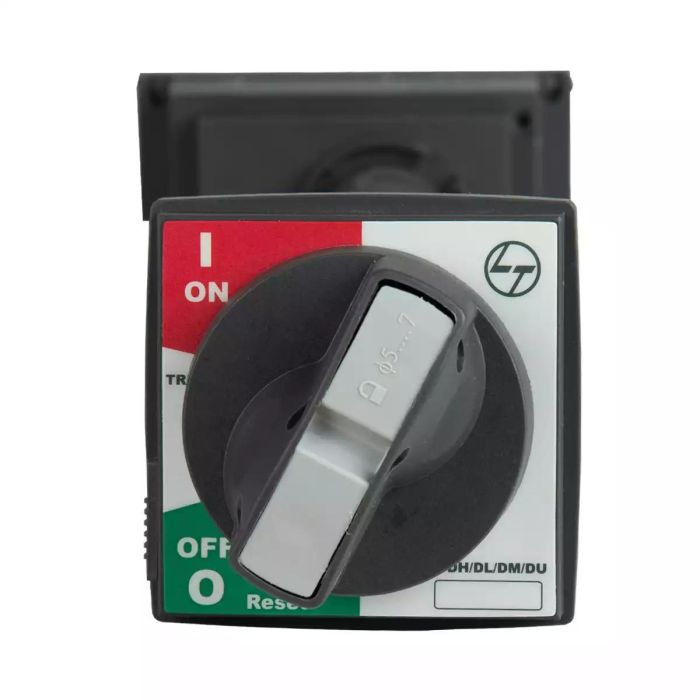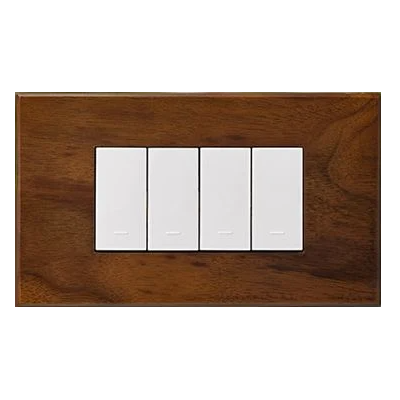views
MCB and MCCB: Key Differences, Functions & Applications Explained
In modern electrical systems, protection is not just a convenience—it's a necessity. Every building, from residential flats to complex industrial facilities, depends on devices that can guard circuits from damage due to overcurrents, short circuits, or overloads. Two of the most essential circuit protection devices in this domain are the MCB and MCCB.
Though they serve similar functions, MCBs (Miniature Circuit Breakers) and MCCBs (Moulded Case Circuit Breakers) are designed for very different environments and applications. Understanding the distinctions between these two can help ensure proper system protection, cost savings, and operational safety.
This guide explores the working, functions, and applications of MCB and MCCB, outlines the MCB range, and helps you choose the right one for your specific needs.

What are MCB and MCCB?
MCB (Miniature Circuit Breaker)
An MCB is an automatically operated electrical switch that protects low-voltage electrical circuits from damage caused by excess current. It is generally used in homes, offices, and commercial buildings where load currents are low.
Current Rating: Usually up to 100A
Breaking Capacity: Up to 10kA
Applications: Light commercial and residential circuits
MCBs offer quick response to overcurrent and short-circuit faults, cutting off the power immediately to prevent electrical hazards.
MCCB (Moulded Case Circuit Breaker)
An MCCB, on the other hand, is a type of circuit breaker used for higher current ratings and industrial applications. It is more robust and offers adjustable trip settings, which make it highly versatile in heavy-duty electrical systems.
Current Rating: Ranges from 100A up to 1600A or more
Breaking Capacity: Up to 100kA
Applications: Industrial facilities, high-capacity commercial buildings, generator circuits
MCCBs provide better flexibility, thermal-magnetic protection, and manual reset mechanisms, suitable for complex power systems.
Working Principle of MCB and MCCB
MCB Working Principle
The MCB operates on two key mechanisms:
Thermal Protection: A bimetallic strip heats up and bends when excess current flows continuously, eventually tripping the breaker.
Magnetic Protection: In the event of a sudden short circuit, an electromagnet causes the breaker to trip instantly.
The MCB resets manually and is reusable after a fault is cleared.
MCCB Working Principle
MCCBs operate similarly, with added functionalities:
Thermal-Magnetic Trip Unit: Like MCBs, they use a bimetallic strip for thermal overload protection and an electromagnet for short-circuit protection.
Adjustable Trip Settings: Users can fine-tune the overload and short-circuit settings based on application requirements.
Remote Operation: Many MCCBs can be integrated into automated control systems.
Key Differences Between MCB and MCCB
Let’s highlight the primary distinctions between MCB and MCCB in a side-by-side format:
|
Feature |
MCB |
MCCB |
|---|---|---|
|
Full Form |
Miniature Circuit Breaker |
Moulded Case Circuit Breaker |
|
Current Rating |
Up to 100A |
100A to 1600A+ |
|
Breaking Capacity |
Up to 10kA |
Up to 100kA |
|
Applications |
Residential, light commercial |
Industrial, heavy-duty commercial |
|
Trip Adjustment |
Fixed |
Adjustable |
|
Size |
Compact |
Larger |
|
Remote Control |
Not typically supported |
Often supports remote operation |
|
Cost |
Lower |
Higher (due to advanced features) |
Both devices protect against overload and short circuits, but their scope of use is what sets them apart.
Exploring the MCB Range
The MCB range refers to the variety of MCBs available based on:
Current Ratings
MCBs come in various ratings such as 6A, 10A, 16A, 25A, 32A, 40A, 63A, etc. The MCB range is designed to match different load requirements:
6A – 16A: Lighting and small appliances
20A – 40A: Geysers, AC units, motor circuits
50A – 63A: Main circuit breakers for residential or small commercial panels
Trip Curves
MCBs are classified into:
Type B: Trips between 3–5 times rated current (ideal for residential use)
Type C: Trips between 5–10 times rated current (used in commercial circuits)
Type D: Trips between 10–20 times rated current (suitable for heavy machinery)
Understanding the MCB range helps in selecting the right device that offers both efficiency and protection.
Applications of MCB and MCCB
MCB Applications
Homes and apartments
Office buildings
Small shops and retail units
Lighting circuits
Low-power motor protection
Panel boards in domestic setups
MCCB Applications
Industrial plants and factories
High-voltage commercial buildings
Power distribution boards
Generators and substations
Large motors, compressors, and HVAC systems
Solar and renewable energy systems
The difference in MCB and MCCB usage largely depends on the scale, load, and complexity of the electrical system.

When to Use MCB vs MCCB?
Here’s a quick reference guide:
Use an MCB when:
The load current is under 100A
Installation space is limited
Budget constraints are present
You’re protecting residential or light commercial circuits
Use an MCCB when:
The load current exceeds 100A
Adjustable trip settings are needed
The environment involves fluctuating or high current
Industrial compliance and high breaking capacity are required
Choosing between the MCB and MCCB depends not just on current ratings, but also on safety expectations, environmental conditions, and load demands.
Why Quality Matters in Circuit Protection
Low-quality breakers can malfunction during a fault, leading to fire hazards, equipment damage, and even life-threatening situations. Always look for:
ISI/IEC certification
Accurate trip characteristics
Durable housing materials
Reputable brands with proven safety records
This is especially important when selecting from the MCB range or sizing an MCCB for critical industrial applications.
Conclusion
When safety, durability, and performance matter, choose a brand you can trust. Lauritz Knudsen Electrical and Automation offers a wide portfolio of high-quality MCB and MCCB solutions, including a comprehensive MCB range designed for diverse residential, commercial, and industrial applications.
Their breakers are manufactured using advanced safety engineering and comply with global electrical standards, ensuring reliable operation under all conditions. Whether you're upgrading a small home panel or designing an industrial power system, Lauritz Knudsen Electrical and Automation has the right protection device to match your needs.
Invest in long-term safety. Choose expertise. Choose Lauritz Knudsen.



Comments
0 comment